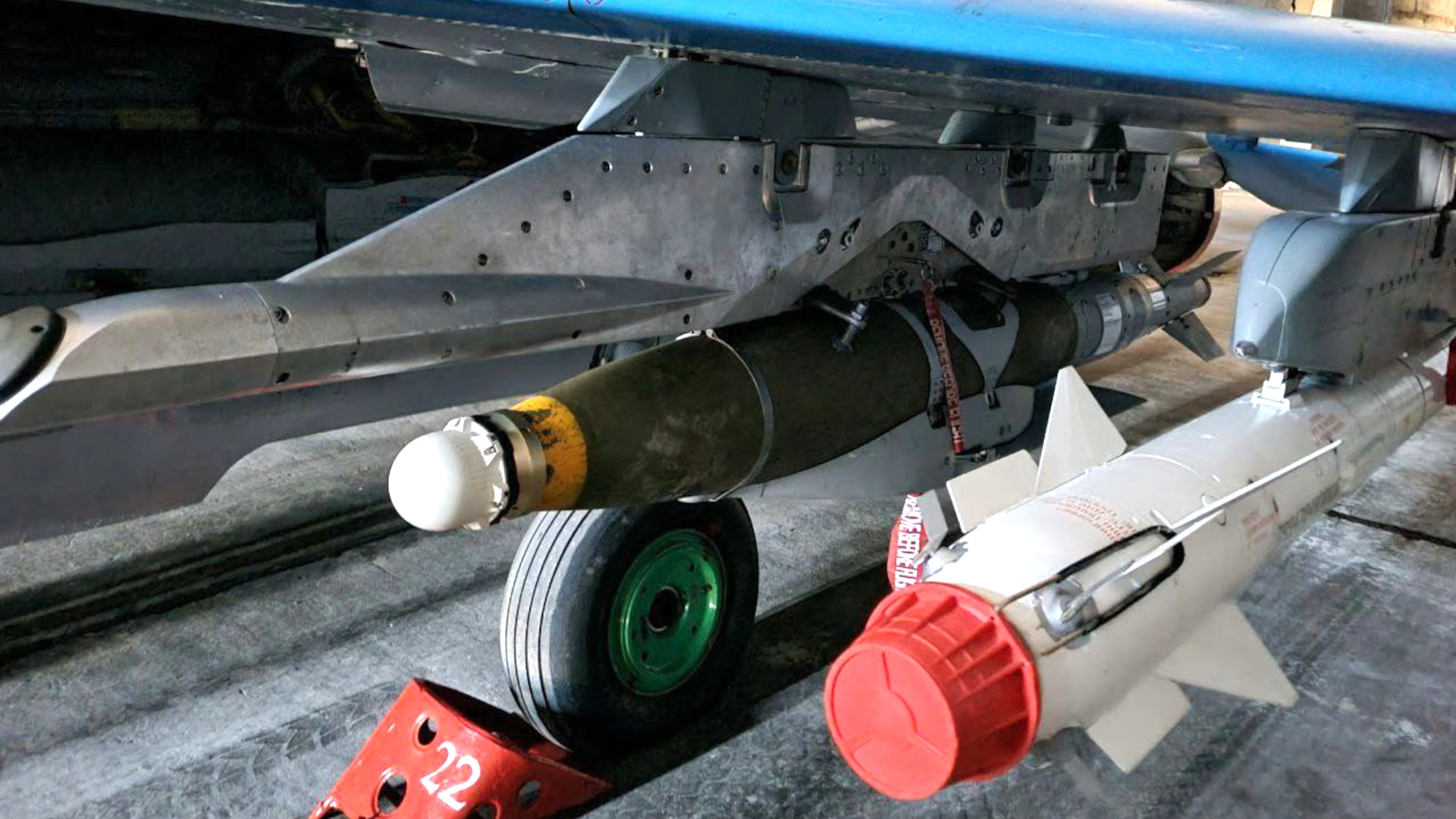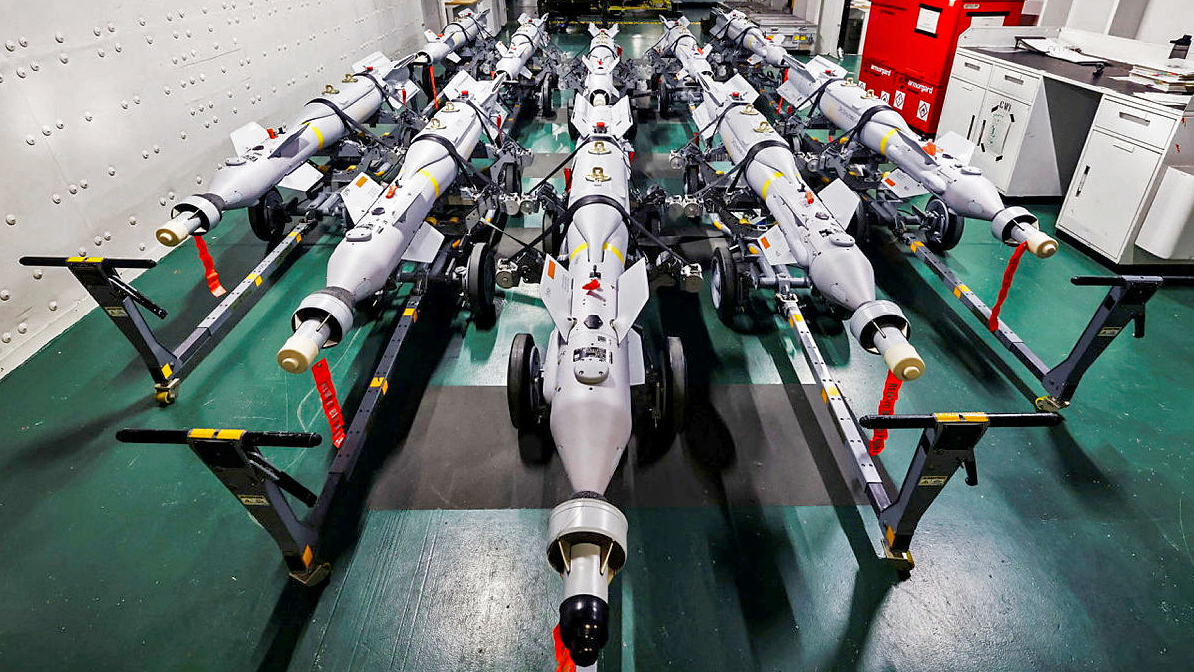Ukraine will receive Paveway IV precision-guided bombs as part of the latest package of weapons being supplied by the United Kingdom to assist in the war with Russia. At this stage, it’s unclear which aircraft will be armed with the dual-mode Paveway bombs, but the move ensures the United Kingdom remains very much at the forefront of delivering advanced and novel military equipment to Ukraine.

News of the planned transfer of the Paveway IV was apparently first delivered by BBC defense correspondent Jonathan Beale on his personal X account.
A U.K. Ministry of Defense official confirmed to TWZ that the Paveway IV “was included in the package of 1,600 munitions that was announced by the Prime Minister for Ukraine this week.” This total will also include additional Storm Shadow cruise missiles, but the exact breakdown is unclear.
The development has also been reported by other U.K. media outlets, including The Telegraph, which suggests that the bombs “could either be fitted to the U.S.-made F-16 fighter jets that are set to arrive in months or its older Soviet-era planes.”
At this stage, there is no indication of how many of the bombs will be supplied, or when they might start to arrive. We put those questions to the U.K. Ministry of Defense, but they told us they are not providing any more details at this stage.

Manufactured by Raytheon UK, the Paveway IV was developed to meet British requirements and is based primarily on a 500-pound high-explosive bomb body.
The most notable feature of the weapon is its dual-mode guidance package, in which the standard laser seeker normally found on the Paveway series is complemented by a GPS-aided inertial navigation system (INS).
This provides a significant degree of versatility. Earlier versions of the Paveway family of laser-guided bombs required the target to be lased, either via a designator on the launching aircraft or a separate platform or by forces on the ground; these also have to be relatively close to the target (within line-of-sight) during the delivery. The laser seeker also allows the munition to hit moving targets, not just static ones.

As well as these requirements, another drawback of a laser-guided weapon of this kind is the fact its use can be hampered or prevented altogether by poor weather or the use of battlefield obscurants.
Adding a GPS/INS function means that the Paveway IV can also be used to target static targets, in any weather, with very high accuracy, as well as using the original laser guidance mode when applicable.
Furthermore, if laser guidance is not available in the terminal phase, or the laser spot is blocked by clouds for instance, the weapon will automatically switch over to GPS/INS guidance.
So think of it very loosely as a Paveway and Joint Direct Attack Munition (JDAM) fused into one, and even the JDAM family has followed suit by adding a dual-mode laser-guided option.
Since GPS networks can also be compromised, the Paveway IV uses an anti-jamming GPS/INS. This could be of particular relevance in Ukraine, where Russian electronic warfare measures have been successfully used to interfere with GPS-aided weapons, notably the U.S.-supplied JDAM. Two seconds before impact, the Paveway IV confirms that it’s on the right path and that it hasn’t been jammed. If those parameters are not met, the weapon’s fuze will not be armed.

According to the original British requirements, the weapon is able to achieve a Circular Error Probable (CEP) of 15 meters, in all weather, day and night. The weapon can also be programmed with target coordinates in the air prior to release. The fuze can be selected for airburst (at different heights), detonation upon impact, or detonation after impact.
The Paveway IV is billed by the U.K. Royal Air Force (RAF) as “significantly minimizing collateral damage,” with the original requirements stipulating that it would cause no greater damage to collateral objects than a standard 500-pound bomb delivered with the same accuracy.
Since then, the weapon has been further developed with specific warheads offering an even lower level of collateral damage, as well as a penetrating warhead to deal with hardened and buried targets.
The Paveway IV entered RAF service in 2008 and has been integrated on the Harrier GR9 and Tornado GR4 (both now retired), Typhoon FGR4, and F-35B, and it will also arm the forthcoming Protector RG1 drone — a version of the MQ-9B. The weapon has been combat-proven in Afghanistan, Libya, Iraq and Syria, as well as more recently against Houthi militia targets in Yemen.

As far as is known, the only other customers for the Paveway IV are Saudi Arabia and Qatar, to arm their Typhoon fighters.
For Ukraine, the Paveway IV may very well be the first air-launched munition with dual-mode laser and GPS/INS guidance.
In the past, it has received the U.S.-supplied Joint Direct Attack Munition-Extended Range (JDAM-ER), which has been integrated on the MiG-29 and Su-27. Fitted with a range-extending wing kit, the JDAM-ER uses GPS/INS guidance, with Ukraine not known to have received the dual-mode Laser JDAM version.
Less clear is the guidance mode used on Ukraine’s Hammer — also known also under its French name Armement Air-Sol Modulaire (AASM, or Modular Air-to-Ground Armament) — which is a rocket-boosted precision-guided bomb. In its basic form, this also employs GPS/INS guidance, but the weapons can be additionally equipped with imaging infrared or semi-active laser guidance kits.

Unlike the Paveway IV, both the JDAM-ER and Hammer come with range-extending wing kits as standard, with the French weapon additionally having a motor. As a result, in optimal conditions, JDAM-ER and Hammer can strike targets at around 45 miles, although this is much reduced if they are launched from lower levels (which is often required to afford protection against Russian ground-based air defenses).
In contrast, the Paveway IV, when dropped from high altitude, can hit targets at a maximum of around 18 miles. In the past, the United Kingdom did look at providing a wing kit for the Paveway IV, with reports that the Lockheed Martin LongShot kit was studied. It could be the case that the Paveway IV for Ukraine also ends up with a wing kit, allowing it to hit a much wider range of targets while affording an additional degree of survivability to the launch aircraft.
Regardless, what’s notable about the Paveway IV is the prospect of Ukraine having for the first a modern Western-supplied precision-guided munition with laser guidance, which promises the ability to strike moving targets as well as bringing increased accuracy, especially in GPS-denied environments.
With the JDAM-ER (and likely also the Hammer), Ukraine appears to be making use of ‘quick-fit’ integration. As TWZ has suggested in the past, the JDAM-ER is likely used in a pre-programmed mode, with target coordinates inputted on the ground before flight. This removes the flexibility to retarget in flight but still offers valuable precision — plus standoff range — against known targets.

To make full use of its capabilities, the integration of the Paveway IV will be more challenging, requiring a targeting pod integrated with the aircraft, or a designator on the ground. On the other hand, even using the weapons exclusively in GPS/INS mode would be a very useful addition to the Ukrainian armory.
We have seen in the case of the JDAM-ER that Ukraine is making use of a purpose-designed launch pylon that allows the NATO-standard munition to be mated to a MiG-29 or Su-27 and also feeds the weapon with critical GPS information before being released.
This pylon may also allow the Paveway IV to be rapidly integrated on Soviet-era combat aircraft, even if they are not able to exploit its full menu of capabilities.
Beyond that, it could be the case that the Paveway IV also ends up on Ukraine’s F-16s, the first of which, provided by Denmark, is planned to arrive in the country sometime this summer.
As far as we know, the Paveway IV isn’t yet integrated on the F-16, but the broadly similar GBU-49 Enhanced Paveway II is — including being used on the Danish jets. This weapon also combines a GPS/INS-equipped guidance section with a laser seeker and a 500-pound bomb body.

It could be the case that the U.K.’s confirmation of future Paveway IV deliveries to Ukraine also provides us with our first indication of one of the weapons the F-16 will employ in Ukrainian service. On the other hand, the extremely non-permissive air environment over the front lines would likely preclude the F-16 being able to use the Paveway in a laser-guided manner in most combat circumstances, with the preference more likely to be for lobbing the weapons on a lofted trajectory under GPS/INS guidance.
Moreover, the fact that Ukraine has fairly rapidly introduced other advanced Western munitions onto its Soviet-era fighters means that we shouldn’t be surprised to see the Paveway IV appearing on one or more of these types, first.
It’s worth noting that Ukraine’s Su-24 strike aircraft features an internal Kayra-24 laser/TV daytime sight including a target designator to ‘paint’ the target for the missile’s laser seeker. However, this is compatible with Soviet-era air-to-ground munitions, rather than NATO-standard ones. Furthermore, it would appear that the small Su-24 fleet is already busily tasked with launching Storm Shadow and SCALP EG cruise missiles, limiting its scope to take on other missions.

As it stands, we will have to wait and see both when the Paveway IV appears in Ukrainian hands, and which aircraft will be used to deliver it. In the meantime, it puts another significant new capability into Ukraine’s hands and provides a further example of the United Kingdom taking something of a lead when it comes to committing new types of weapons to Kyiv’s war effort.
Contact the author: thomas@thewarzone.com
